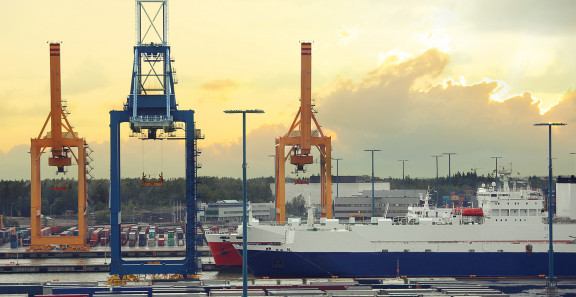Transport accounts for approximately one fifth of all greenhouse gas emissions in Finland. Road traffic is responsible for the majority of this. With the increased climate awareness and regulation of traffic emissions, the transport sector is trying to find sustainable transport solutions.
To tackle this situation, one needs tools: figures, results, diagrams. In addition to the current state, forecasts, targets and key performance indicators are needed in order to determine the impact of measures.
Sitowise provides the necessary means for calculating traffic emissions for both individual transport chains and geographic areas. In addition, we create emission scenarios for various future outlooks.
Emissions from Tampere to Duisburg
Calculating the emissions for an individual transport chain is required when a company wants to determine the emissions, for example, for transporting liquid fuel by a road tanker from Porvoo to Kuopio or for rail container transport from Tampere to Rauma and onwards by boat to the port of Rotterdam and again by road to Duisburg in Germany.
Emissions can be calculated for the entire transport chain, regardless of whether the transport takes place by boat, plane or any other means of transport or even by several means of transport. The calculation also takes into account return transports involving empty transport vehicles.
Analysing emissions at a regional level is an appropriate method, for example, when it comes to finding out the CO2 emissions for the region’s foreign trade per transport method in the region, in Finland and for maritime transports.
When change is a permanent state, what will the future look like?
What if you get a larger vehicle and take on a bigger load? Is it even possible to reach the destination with such a large vehicle? Or should you switch to an electric car? What would the emissions be?
The calculation scenarios may include, for example, replacing a company's vehicles with vehicles having larger capacity or replacing diesel engine distribution vehicles with electric vehicles.
At a regional level, the scenarios may include future projects such as new industrial plants or infrastructure improvement projects. When we add demographic projections, economic development and urbanisation to the mix, the scenarios are a viable tool for making decisions on sustainable solutions today.
The previous emission calculation projects of Sitowise include, for example, the emission calculation model for goods transport for the Finnish maritime transport (MERIMA models) and the 2030 logistics vision for Southern Finland.
